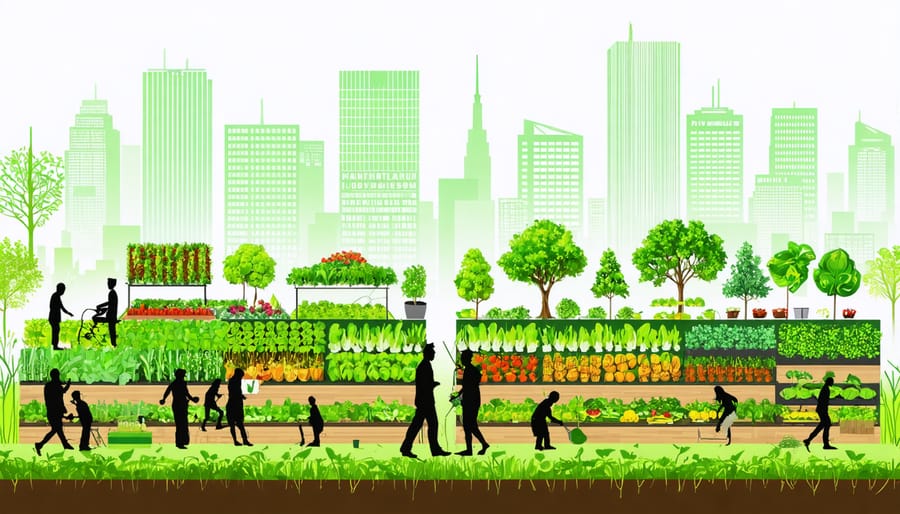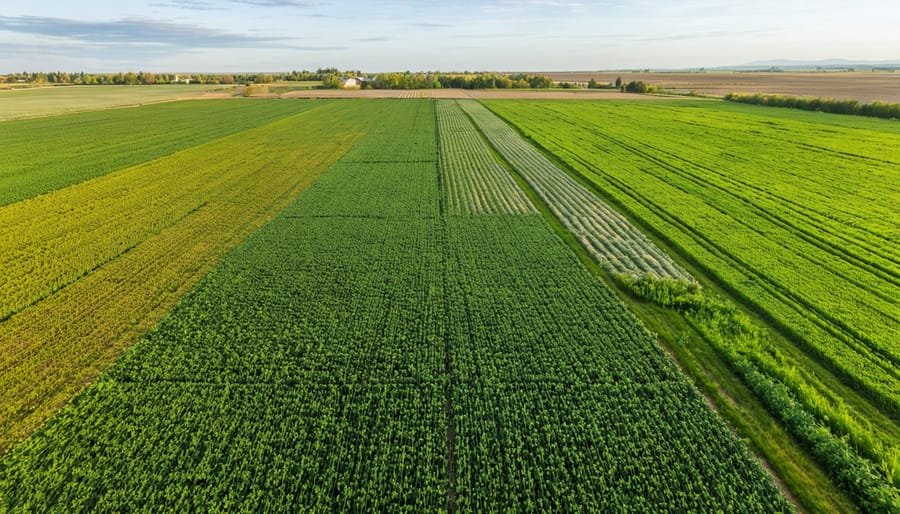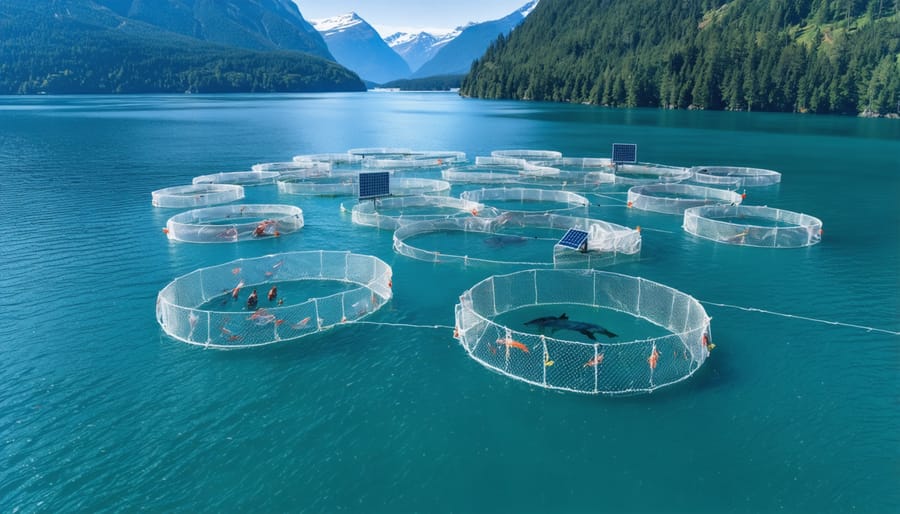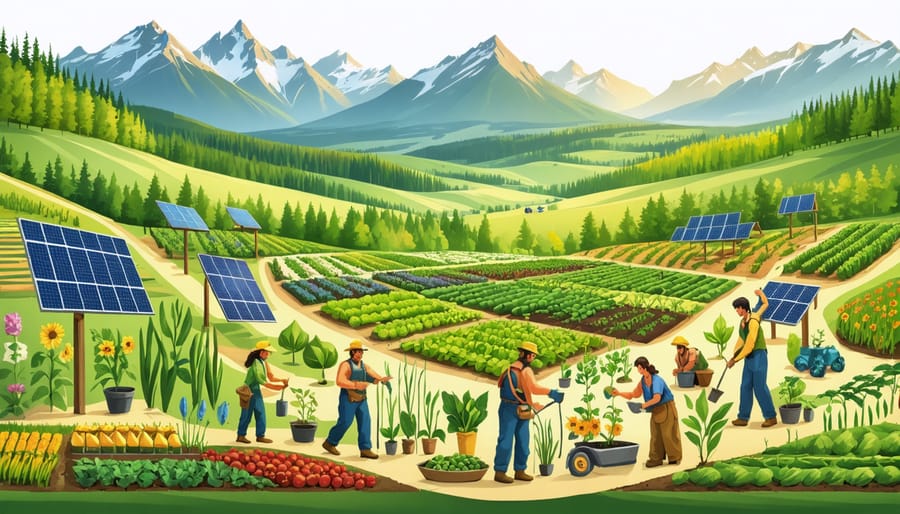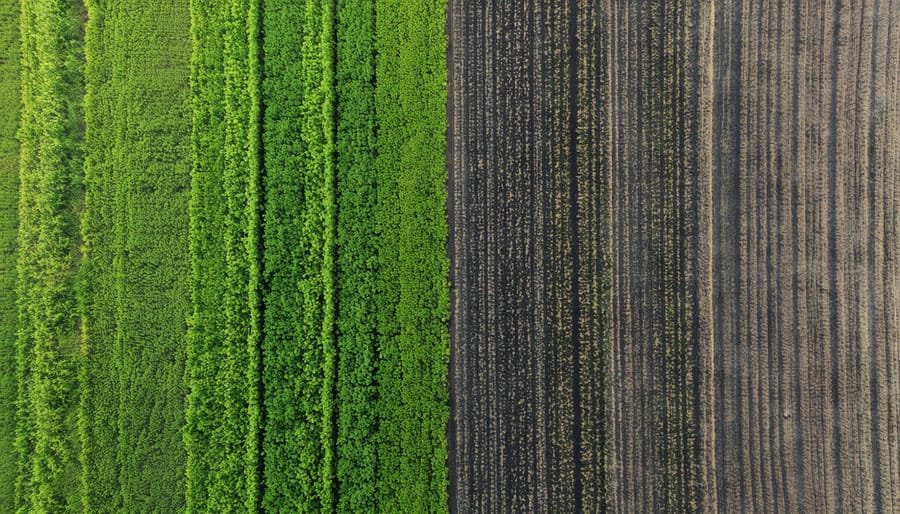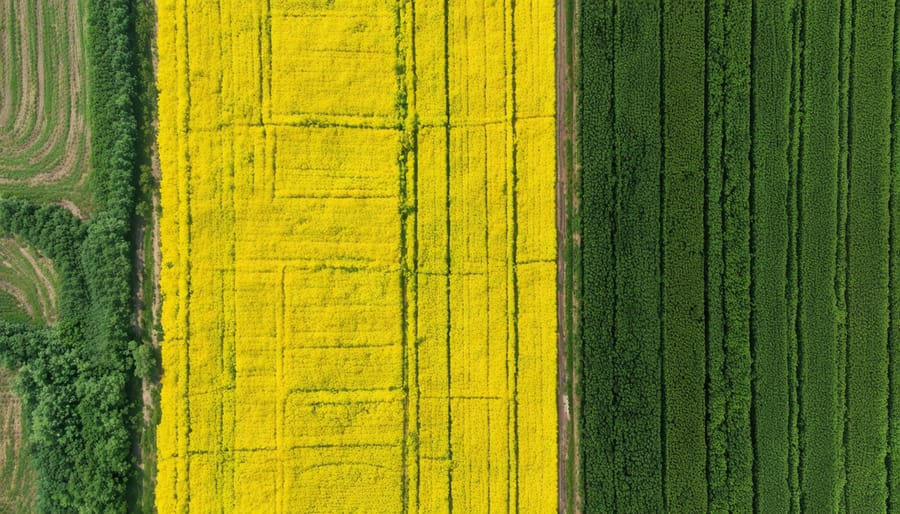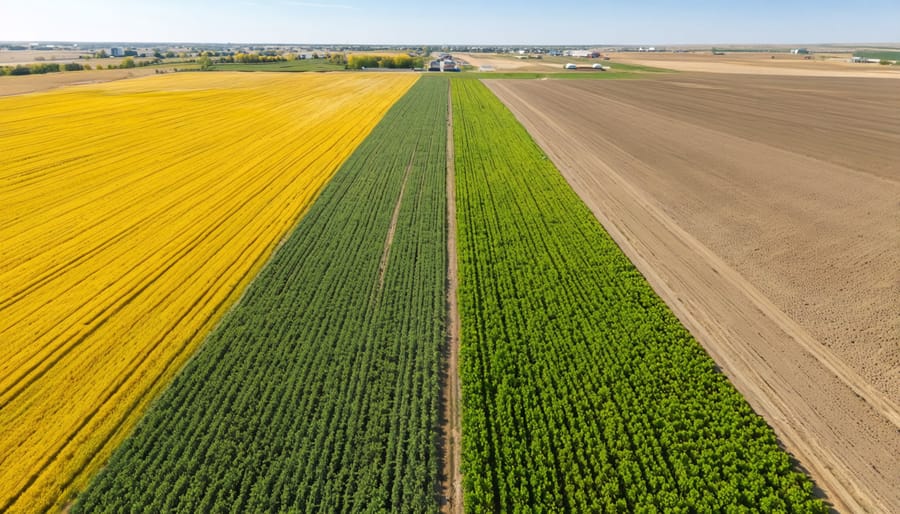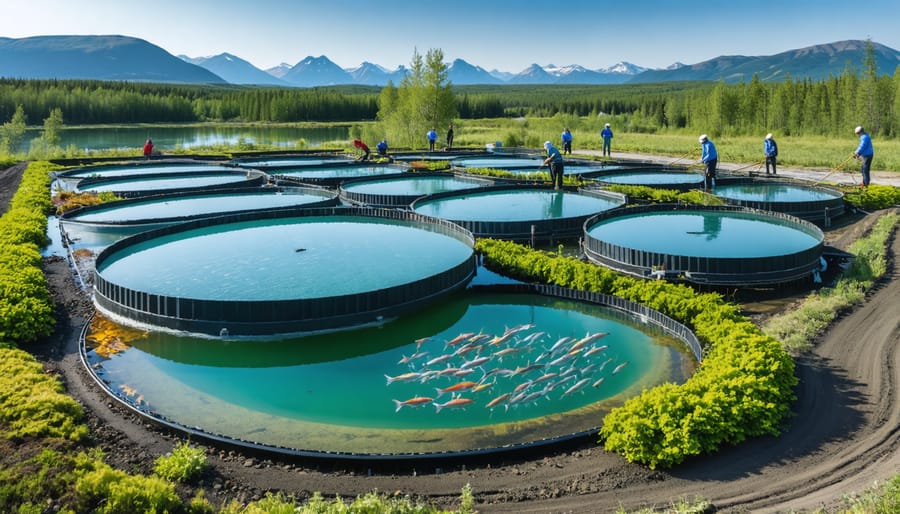Food security stands at the intersection of agriculture, sustainability, and community resilience in Canada’s evolving farming landscape. From Alberta’s sprawling wheat fields to urban community gardens, the ability to consistently produce and distribute nutritious food shapes our agricultural future. For Canadian farmers and agricultural professionals, food security means more than just crop yields—it encompasses sustainable production methods, robust distribution networks, and climate-resilient farming practices that ensure stable food access for generations to come.
As extreme weather events and global market pressures intensify, Canadian agricultural communities are innovating to strengthen local food systems. Through collaborative initiatives like seed banks, regional food hubs, and season-extension technologies, farmers across Alberta are pioneering approaches that enhance both production capacity and community food sovereignty. These efforts demonstrate how modern agriculture must balance immediate productivity with long-term sustainability to achieve true food security.
The challenge of feeding a growing population while preserving our agricultural resources requires a comprehensive understanding of food security’s four pillars: availability, access, utilization, and stability. By examining these components through a distinctly Canadian lens, we can develop practical solutions that work for our unique climate, geography, and agricultural heritage.
Understanding Food Security in Urban Agriculture
The Four Pillars of Food Security
Food security in agriculture rests on four fundamental pillars that work together to create a resilient food system. Here in Alberta, we’ve seen how these pillars directly impact our farming communities and urban food landscapes.
The first pillar, availability, ensures that sufficient quantities of food are consistently present through local production, imports, or food aid. In our province, this means maintaining productive farmland and supporting diverse agricultural operations, from large-scale grain farms to urban community gardens.
Access, the second pillar, focuses on people’s ability to obtain nutritious food through various means, including purchasing power and distribution systems. We’ve seen successful examples in Edmonton and Calgary, where farmers’ markets and food box programs help bridge the gap between producers and consumers.
The third pillar, utilization, encompasses food safety, nutrition knowledge, and proper food preparation. This is where our agricultural extension services play a crucial role, providing education about food handling and preservation techniques to both farmers and consumers.
Stability, the fourth pillar, ensures that the other three pillars remain constant over time. In Alberta’s variable climate, this means developing resilient farming practices that can withstand weather extremes and market fluctuations. Local food storage facilities and year-round greenhouse operations help maintain this stability.
Together, these pillars create a framework that supports sustainable food security in both rural and urban settings, ensuring our communities have reliable access to nutritious food throughout the year.
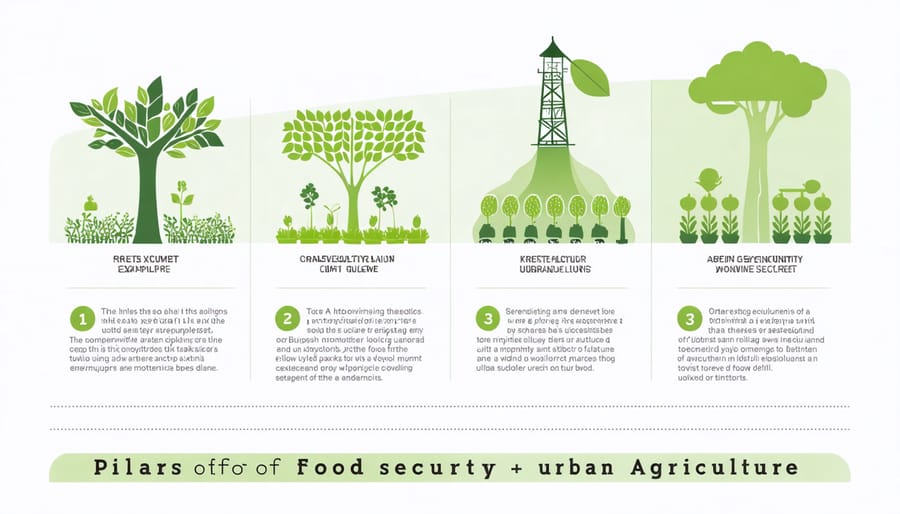
Urban Agriculture’s Role in Local Food Systems
Urban agriculture is emerging as a vital component of sustainable food systems in Canadian cities. Rooftop gardens, community plots, and vertical farming operations are transforming unused urban spaces into productive growing areas. In Alberta, initiatives like Edmonton’s Urban Farm and Calgary’s Urban Agriculture Program demonstrate how city-based agriculture strengthens local food security by providing fresh produce within city limits. These projects reduce transportation distances, create community engagement opportunities, and ensure year-round access to nutritious food through innovative growing methods like hydroponics and greenhouse cultivation. Urban farming also serves as an educational tool, helping city residents understand food production and encouraging participation in local food systems.
Current State of Urban Agriculture in Alberta
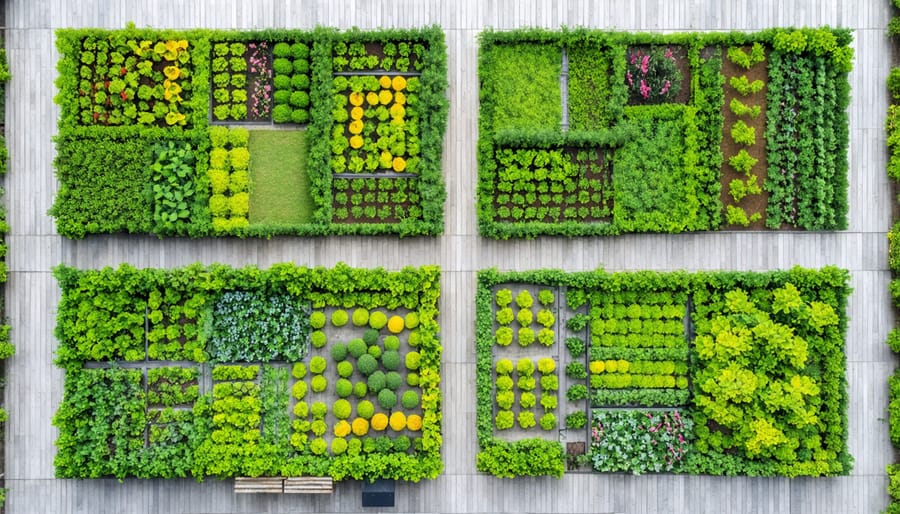
Success Stories from Edmonton and Calgary
Edmonton and Calgary have emerged as pioneers in urban agriculture, demonstrating how cities can contribute to food security through innovative successful farming practices. In Edmonton, the City Farm collective has transformed 2.5 hectares of previously unused urban land into productive growing spaces, providing fresh produce to over 500 families annually through their community-supported agriculture program.
The Grow Calgary initiative stands as Canada’s largest urban farm, converting 11 acres of vacant land near Canada Olympic Park into a thriving agricultural hub. Since 2013, they’ve donated over 30,000 kilograms of fresh produce to local food banks and social service agencies, directly addressing food insecurity in vulnerable communities.
Both cities have implemented innovative rooftop garden projects. The SAIT Culinary Campus in Calgary maintains a 380-square-metre rooftop garden, producing over 2,000 kilograms of vegetables yearly while training future chefs in sustainable food practices. Edmonton’s MacEwan University’s rooftop garden yields approximately 1,500 kilograms of produce annually, supplying their campus cafeteria and teaching students about urban agriculture.
These success stories demonstrate how urban farming initiatives can strengthen local food systems. The Edmonton Northlands Urban Farm has created educational programs reaching over 2,000 students yearly, teaching sustainable growing methods and food security principles. Meanwhile, Calgary’s YYC Growers cooperative has united 45 urban farmers, creating a resilient local food network that supplies fresh produce to thousands of city residents through weekly harvest boxes and farmers’ markets.
Challenges and Opportunities
Canadian farmers face several key challenges in maintaining food security, including unpredictable weather patterns, rising input costs, and market volatility. Recent surveys show that Alberta farmers have experienced a 15% increase in operational costs over the past two years, putting additional pressure on farm sustainability.
However, these challenges also present opportunities for innovation and growth. Many farmers are turning to precision agriculture technologies, which can reduce water usage by up to 30% while improving crop yields. Local success stories include the adoption of drought-resistant crop varieties and the implementation of smart irrigation systems across Southern Alberta.
Community-supported agriculture (CSA) programs are gaining momentum, with over 200 active programs across the province. These initiatives help farmers secure stable income while providing consumers with reliable access to fresh, local produce. Additionally, government-backed programs supporting sustainable farming practices offer grants of up to $50,000 for implementing climate-smart technologies.
Looking ahead, emerging opportunities in vertical farming and regenerative agriculture practices show promise for enhancing food security while maintaining environmental stewardship. Collaboration between farmers, researchers, and local communities continues to drive innovative solutions to these challenges.
Practical Implementation Strategies
Starting a Community Garden
Starting a community garden is a powerful way to enhance local food security while building stronger neighbourhood connections. Here’s a practical guide to get your project off the ground in Alberta:
First, gather interested community members and form a core planning committee. Reach out through community leagues, local farmers’ markets, and social media to find like-minded individuals. Once you have a dedicated group, identify potential locations – aim for sites with good sun exposure, access to water, and reasonable soil quality.
Secure necessary permissions by contacting your local municipality about land use regulations and permits. Many Alberta communities have specific bylaws regarding urban agriculture, so it’s essential to understand these requirements early in the process.
Develop a clear organizational structure. Create guidelines for plot allocation, maintenance responsibilities, and shared resources. Consider implementing a membership fee structure to cover basic costs like water and tools. Most successful community gardens in Alberta charge between $30-50 per plot annually.
Design your garden with our climate in mind. Include features like wind breaks, raised beds for better drainage, and consider season extension techniques such as row covers. Plan communal areas for composting and tool storage.
Engage local agricultural experts and experienced gardeners to provide workshops and guidance. Many Alberta agricultural societies offer free or low-cost educational resources for community gardens. Remember to establish a communication system among members, whether through regular meetings or digital platforms, to share knowledge and coordinate activities.
Sustainable Urban Farming Techniques
Urban farming has emerged as a crucial component of food security in Canadian cities, offering innovative solutions for local food production. In Edmonton and Calgary, community gardens and rooftop farms are transforming unused spaces into productive agricultural zones, demonstrating how urban areas can contribute to food sovereignty.
Vertical farming systems have proven particularly successful in Alberta’s climate, allowing year-round production despite seasonal challenges. These systems typically utilize hydroponic or aeroponic techniques, producing up to 30% more yield per square metre compared to traditional farming methods while using 90% less water.
Integration of zero-waste agriculture methods in urban farming has become increasingly important, with composting systems and water recycling playing vital roles. Many urban farmers are adopting agroecological approaches, combining traditional knowledge with modern technology to create resilient food systems.
Container gardening has gained popularity in residential areas, with innovative solutions like self-watering systems and climate-controlled environments making it accessible to more urban residents. Community-supported agriculture (CSA) programs have strengthened connections between urban farmers and local consumers, ensuring steady market access while building food security networks.
The success of urban farming initiatives often relies on community engagement and educational programs. Several Alberta-based organizations offer workshops and resources for aspiring urban farmers, helping to build capacity and ensure long-term sustainability of these initiatives.
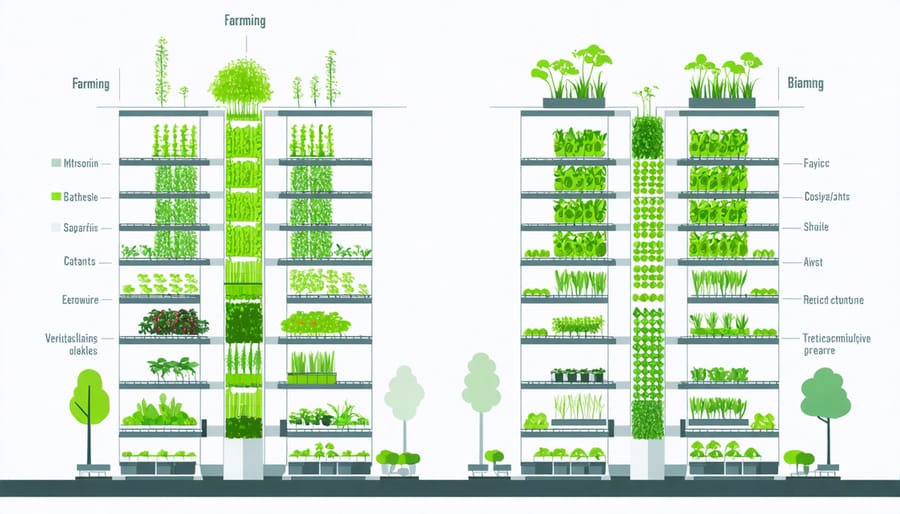
Food security in agriculture represents a vital cornerstone of our communities’ health and resilience. Throughout this discussion, we’ve explored how sustainable farming practices, local food systems, and innovative agricultural approaches contribute to ensuring reliable access to nutritious food for all Canadians.
As Alberta farmers and agricultural professionals, we have both the responsibility and opportunity to strengthen our food security systems. By implementing diverse cropping strategies, adopting climate-smart farming techniques, and fostering strong local food networks, we can build a more robust and sustainable food future.
Remember that every action counts – whether it’s partnering with local food banks, participating in community-supported agriculture programs, or sharing knowledge with fellow farmers. The path to enhanced food security requires collective effort and commitment from all stakeholders in our agricultural community.
Let’s continue working together to create resilient food systems that serve our communities today while preparing for tomorrow’s challenges. By taking action now, we can ensure that future generations of Canadians have access to sustainable, nutritious, and locally-produced food.

